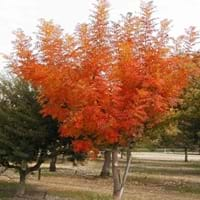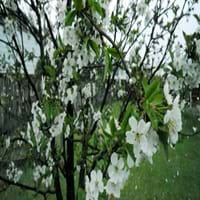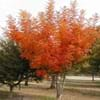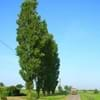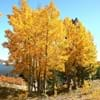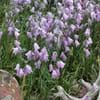Life Span
Perennial
Perennial
Origin
China
Western Asia
Types
Not Available
Büttnera Czerwona, Hedelfinger Sweet Cherry
Number of Varieties
Not Available
Habitat
Mountains, Rocky areas
Woodland Garden Canopy
USDA Hardiness Zone
6-9
5-8
Sunset Zone
4, 5, 6, 7, 8, 9, 10, 11, 12, 13, 14, 15, 16, 17, 18, 19, 20, 21, 22, 23
2a, 2b, 6, 7, 14, 15
Habit
Oval or Rounded
Upright/Erect
Flower Color
Red, Green
Not Available
Flower Color Modifier
Bicolor
Bicolor
Fruit Color
Red, Blue, Green, Dark Blue, Black
Not Available
Leaf Color in Spring
Green, Light Green
Not Available
Leaf Color in Summer
Green, Dark Green
Not Available
Leaf Color in Fall
Red, Orange, Pink
Not Available
Leaf Color in Winter
Not Available
Not Available
Leaf Shape
Pinnate
broad, flat
Plant Season
Summer, Fall
Spring, Summer, Fall
Sunlight
Full Sun, Partial Sun
Full Sun, Partial Sun
Growth Rate
Medium
Medium
Type of Soil
Clay, Loam, Sand
Clay, Loam, Sand
The pH of Soil
Acidic, Neutral, Alkaline
Acidic, Neutral
Soil Drainage
Well drained
Well drained
Bloom Time
Early Spring, Spring
Spring
Tolerances
Pollution, Drought, Soil Compaction
Not Available
Where to Plant?
Ground
Ground
How to Plant?
Divison, Seedlings, Stem Planting, Transplanting
Semi-hardwood and hardwood cuttings
Plant Maintenance
Medium
Medium
Watering Requirements
Average Water Needs, Water once every two or three weeks, Water when top layer of soil becomes dry
Water 1 in. per week during the active growing period, Water more in summer
In Summer
Lots of watering
Lots of watering
In Spring
Moderate
Moderate
In Winter
Average Water
Average Water
Soil pH
Acidic, Neutral, Alkaline
Acidic, Neutral
Soil Type
Clay, Loam, Sand
Clay, Loam, Sand
Soil Drainage Capacity
Well drained
Well drained
Sun Exposure
Full Sun, Partial Sun
Full Sun, Partial Sun
Pruning
Remove damaged leaves, Remove dead branches, Remove dead leaves
Remove dead branches, Remove thin branches
Fertilizers
All-Purpose Liquid Fertilizer
A 10 pound bag of 16-4-8 fertilizer
Pests and Diseases
Insects, Red blotch, Rodent
Aphids, Borers, Mites
Plant Tolerance
Drought, Frost
Drought
Flowers
Insignificant
Showy
Flower Petal Number
Not Available
Not Available
Foliage Texture
Medium
Not Available
Foliage Sheen
Glossy
Not Available
Attracts
Birds
Birds, Flies
Allergy
no allergic reactions
Mild Allergen, Vomiting
Aesthetic Uses
Beautification, Landscape Designing, Showy Purposes
Beautification, Used in parkland
Beauty Benefits
Not Available
Anti-ageing, Good Cleanser, Good for skin, Promotes Healthy Hair
Environmental Uses
Air purification
Air purification
Medicinal Uses
No Medicinal Use
Antitussive, Astringent, Diuretic, Tonic
Part of Plant Used
Seeds, Stem
Fruits, Seeds
Other Uses
Application in Furniture, Decoration Purposes, Showy Purposes, Used in biomass, Used in Furniture
Used for making green dye, Wood is used for making furniture
Used As Indoor Plant
No
No
Used As Outdoor Plant
Yes
Yes
Garden Design
Shade Trees, Street Trees
Edible, Fruit / Fruit Tree, Shade Trees, Topiary / Bonsai / Espalier
Botanical Name
PISTACIA chinensis
PRUNUS avium
Common Name
Chinese Mastic, Chinese Pistachio
Sweet Cherry
In Hindi
चीनी पिस्ता
मीठी चेरी
In German
chinesische Pistazie
Süße Kirsche
In French
pistache chinois
Cerise sucrée
In Spanish
pistacho chino
Cereza dulce
In Greek
Κινέζοι Φιστίκι
γλυκό κεράσι
In Portuguese
Pistache chinês
Cereja doce
In Polish
Chiński Pistacje
Słodka Wiśnia
In Latin
LENTISCUS Chinese
dulcis cerasus
Phylum
Magnoliophyta
Magnoliophyta
Class
Magnoliopsida
Magnoliopsida
Family
Anacardiaceae
Rosaceae
Clade
Angiosperms, Eudicots, Rosids
Angiosperms, Eudicots, Rosids
Subfamily
Not Available
Amygdaloideae
Number of Species
Not Available
Not Available
Season and Care of Chinese Pistachio and Sweet Cherry
Season and care of Chinese Pistachio and Sweet Cherry is important to know. While considering everything about Chinese Pistachio and Sweet Cherry Care, growing season is an essential factor. Chinese Pistachio season is Summer and Fall and Sweet Cherry season is Summer and Fall. The type of soil for Chinese Pistachio is Clay, Loam, Sand and for Sweet Cherry is Clay, Loam, Sand while the PH of soil for Chinese Pistachio is Acidic, Neutral, Alkaline and for Sweet Cherry is Acidic, Neutral.
Chinese Pistachio and Sweet Cherry Physical Information
Chinese Pistachio and Sweet Cherry physical information is very important for comparison. Chinese Pistachio height is 760.00 cm and width 760.00 cm whereas Sweet Cherry height is 910.00 cm and width 760.00 cm. The color specification of Chinese Pistachio and Sweet Cherry are as follows:
Chinese Pistachio flower color: Red and Green
Chinese Pistachio leaf color: Green and Light Green
Sweet Cherry flower color: Not Available
- Sweet Cherry leaf color: Not Available
Care of Chinese Pistachio and Sweet Cherry
Care of Chinese Pistachio and Sweet Cherry include pruning, fertilizers, watering etc. Chinese Pistachio pruning is done Remove damaged leaves, Remove dead branches and Remove dead leaves and Sweet Cherry pruning is done Remove dead branches and Remove thin branches. In summer Chinese Pistachio needs Lots of watering and in winter, it needs Average Water. Whereas, in summer Sweet Cherry needs Lots of watering and in winter, it needs Average Water.
